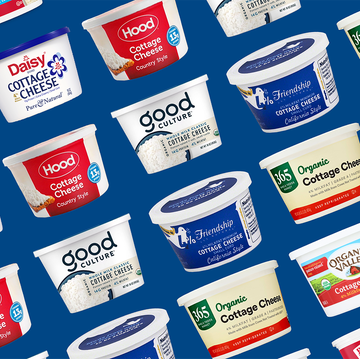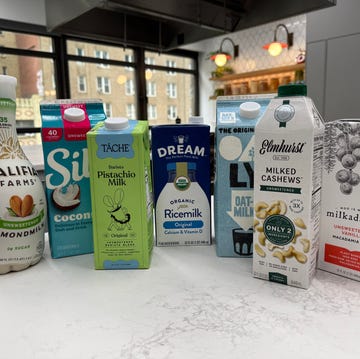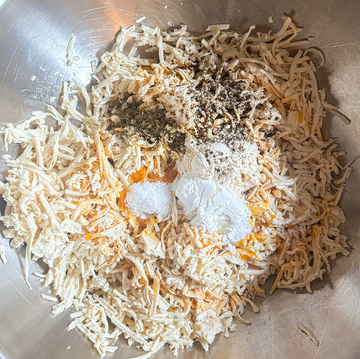Carrots
 Bojsha65//Getty Images
Bojsha65//Getty ImagesCarrots are full of phytochemicals such as beta-carotene that your body converts to vitamin A, which helps with vision — especially at night. Studies also associate consumption with carotenoid containing foods, like carrots, with a decreased risk of breast cancer. Carrots also contain vitamins K, C as well as potassium and fiber. Enjoy these root veggies raw, shredded in salads, or blended in smoothies.
Broccoli
 s_derevianko//Getty Images
s_derevianko//Getty ImagesBroccoli gets its healthy rep because it’s low in calories and high in micronutrients, including vitamin C, vitamin A, and vitamin K. Broccoli also contains the phytochemical sulforaphane which may help prevent against cancer. Broccoli is also a great source of Vit C, K and A among others. Eat it raw, grilled or steamed versus boiled to reap a bigger nutritional bonus.
RELATED: This is the Absolute Best Way to Roast Broccoli
Advertisement - Continue Reading Below
Mushrooms
 Zakharova_Natalia//Getty Images
Zakharova_Natalia//Getty ImagesKale
 alice dias didszoleit//Getty Images
alice dias didszoleit//Getty ImagesYour favorite leafy green is positively chock-full of vitamin K — just ½ cup provides about 440% of the recommended daily value! Another fun fact: A serving of kale also supplies 10% of your daily value for calcium — good to know if you’re lactose intolerant. Studies also indicate that the antioxidants found in kale called glucosinolates, may help to protect against cancer.
Advertisement - Continue Reading Below
Turnips
 STUDIO GRAND OUEST//Getty Images
STUDIO GRAND OUEST//Getty ImagesThis root vegetable is part of the cruciferous family (related to kale, broccoli and Brussels sprouts), is low in calories and rich in fiber and micronutrients including calcium, phosphorus, and potassium. Not only are turnips relatively inexpensive, but their neutral taste makes them easy to add to a big variety of recipes. Try roasting or mashing them for a lower carb swap for potatoes.
Spinach
 Arx0nt//Getty Images
Arx0nt//Getty ImagesThis leafy green is one of the most versatile vegetables, eat it raw tossed in a salad, sautéd, steamed or throw it in a smoothie as a neutral way to boost your green intake. One cup contains your entire daily requirement of Vitamin K and it has tons of vitamin A (over half of the recommended daily amount in a serving!), and vit C which helps boost and enhance your immune system. It also loaded with nitrates which studies have linked with improved cardiovascular health — so make like Popeye and add this leafy green to your diet on the regular.
RELATED: 32 Delicious Easy Spinach Recipes
Advertisement - Continue Reading Below
Asparagus
 Diana Taliun//Getty Images
Diana Taliun//Getty ImagesRich in antioxidants, asparagus is a natural diuretic and as a prebiotic it feeds healthy gut bacteria. Whether you enjoy asparagus roasted or sauteed, grab a bunch the next time you're at the grocery store. The stalks contain only a few calories but lots of fiber and micronutrients such as folate, vitamin C, vitamin A, and vitamin K.
Green Beans
 dirkr//Getty Images
dirkr//Getty ImagesGreen beans are a good source of vitamin A, vitamin C, vitamin K, fiber and they get their bright green color from the antioxidant chlorophyll. The longer you cook them the quicker they lose their vibrancy. Steam, sauté or serve them raw as a side or added to salads.
Advertisement - Continue Reading Below
Cauliflower
 Getty Images
Getty ImagesBeets
 sagarmanis//Getty Images
sagarmanis//Getty ImagesAdvertisement - Continue Reading Below
Tomatoes
 nrqemi//Getty Images
nrqemi//Getty ImagesFun fact: Many nutritionists consider tomatoes both vegetables and fruits. Tomatoes contain lycopene, which give the salad staple its rosy red color. Research has shown that lycopene supports vascular health and helps prevent cardiovascular disease.
While consuming tomatoes raw can provide lycopene, cooking them may also increase the bioavailability of this mighty antioxidant. Either way you can't go wrong!
Onions
 Olha_Afanasieva//Getty Images
Olha_Afanasieva//Getty ImagesOnions are a member of the allium family. Recent research suggests that phytochecmials found in onions and other allium vegetables might be beneficial in the prevention of certain types of cancer. They're also considered a prebiotic and can help to improve gut health and digestion by working to increase the good bacteria.
While there are many different types of onions, yellow is the most widely used. Not only will onions punch up the flavor of whatever you're cooking, but they also contain a flavonoid called quercetin, which has been shown to help with obesity prevention and improved liver function. Major win!
Advertisement - Continue Reading Below
Eggplant
 double_p//Getty Images
double_p//Getty ImagesIf you’ve ever followed the Mediterranean diet, you know how versatile and tasty eggplant can be. Eggplant is also an adaptable vegetable that can absorb the flavor of whatever else is going in your dish. Plus, studies have shown that eggplant contains cardioprotective compounds for a healthier heart. Fun fact, eggplant is actually considered a fruit and not a vegetable.
Sweet Potato
 Julia_Sudnitskaya//Getty Images
Julia_Sudnitskaya//Getty ImagesAdvertisement - Continue Reading Below
Advertisement - Continue Reading Below
Advertisement - Continue Reading Below



























